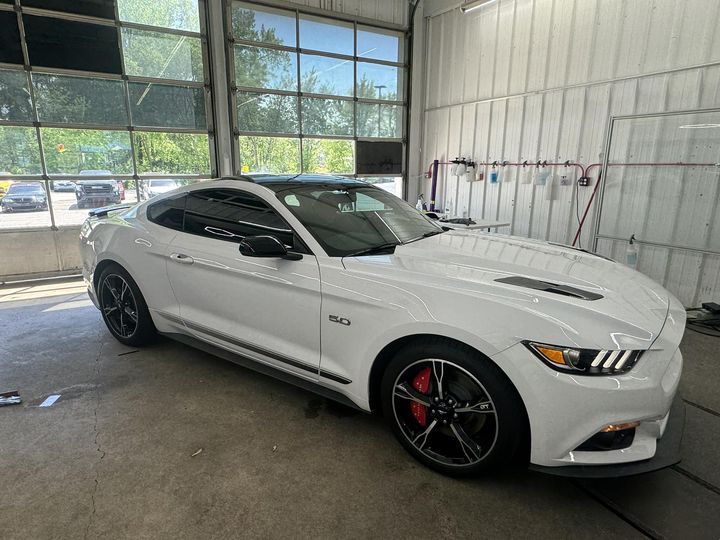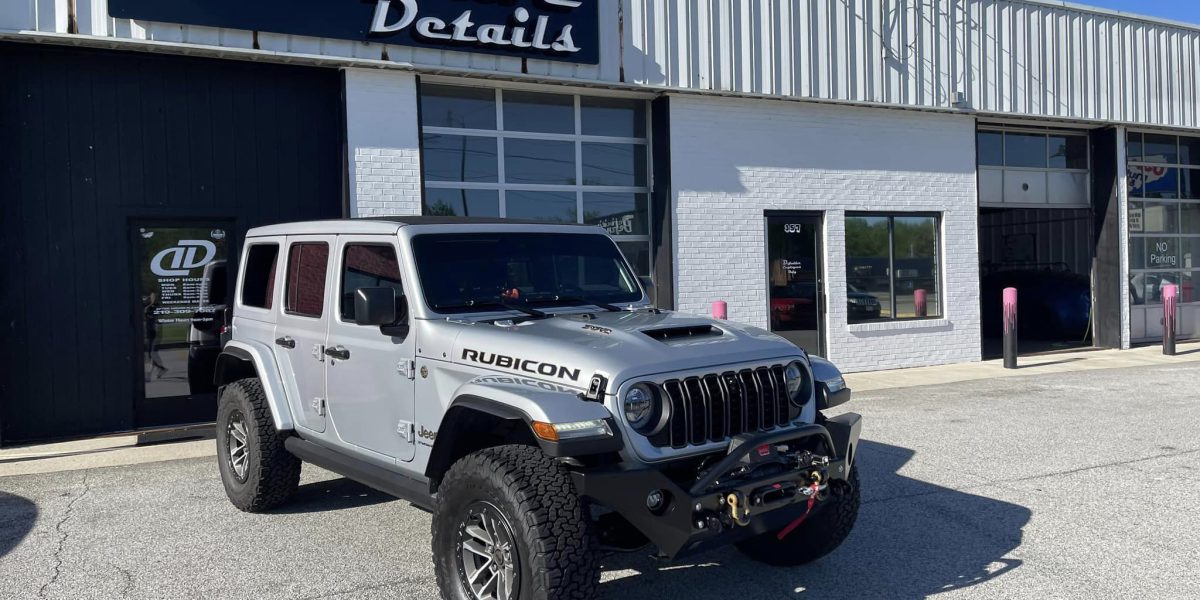When it comes to safeguarding your vehicle’s paint, the process of selecting the ideal Paint Protection Film can seem challenging. From evaluating your driving environment to researching top PPF brands, each step plays an essential role in ensuring your vehicle’s protection. But there’s one critical aspect that often gets overlooked—something that can make or break your PPF experience. So, before you make your final decision, make sure to pay close attention to this often underestimated factor that can impact the longevity and effectiveness of your PPF.

Key Takeaways
- Evaluate driving conditions to determine necessary coverage.
- Consider coverage preferences: full-body or specific areas.
- Align PPF choice with maintenance routines for effectiveness.
- Research reputable PPF brands like XPEL, 3M, and SunTek.
- Obtain multiple quotes and compare prices and services.
Understanding Paint Protection Film (PPF)
When considering PPF for your vehicle, understanding the purpose and composition of this protective film is crucial. Paint Protection Film, commonly known as PPF, is a thermoplastic urethane film applied to the exterior of vehicles to shield them from rock chips, scratches, bug splatters, and other minor abrasions. One of the key benefits of PPF is its ability to provide a sacrificial layer that absorbs the impact of debris, preserving the vehicle’s paint underneath. This can help maintain the aesthetic appeal and resale value of your vehicle.
However, PPF does come with some drawbacks. Over time, the film may show signs of discoloration or become less optically clear, affecting the appearance of your vehicle.
In terms of lifespan and durability, PPF typically lasts anywhere from five to ten years, depending on the quality of the film and environmental factors like sun exposure and harsh weather conditions. Higher-quality PPF tends to have better durability and longevity. Regular maintenance, such as washing the film with a non-abrasive car wash soap and keeping it waxed, can also extend its lifespan.
While PPF offers excellent protection, it isn’t invincible and may still get damaged under severe impacts. Understanding the benefits and drawbacks, as well as the lifespan and durability of PPF, can help you make an informed decision when choosing the right protection for your vehicle.
Assessing Your Vehicle's Needs
To ascertain the appropriate paint protection film for your vehicle, you must first assess its specific protection needs based on factors such as driving conditions and desired level of coverage. Conduct a thorough vehicle examination to identify areas prone to damage and determine the extent of protection required.
Consider the following when evaluating your vehicle’s needs:
- Driving Conditions: Evaluate the usual conditions your vehicle is exposed to, such as highway driving, off-road adventures, or urban commutes. Different environments may require varying levels of PPF coverage to shield your vehicle adequately.
- Coverage Preferences: Determine the extent of protection you desire for your vehicle. Do you want full-body coverage, or are you primarily concerned about specific vulnerable areas like the front bumper and hood? Understanding your coverage preferences will help you select the most suitable PPF.
- Maintenance Schedule: Consider your vehicle’s maintenance routine when choosing a PPF. Some films may require specific care routines or periodic reapplications to maintain effectiveness. Make sure the PPF aligns with your maintenance habits to prolong its durability and protective properties.
Researching PPF Brands and Types
Begin by exploring a variety of reputable paint protection film brands and types to determine the most suitable option for your vehicle’s specific needs. When considering brand comparisons, look at factors such as the reputation of the manufacturer, the quality of materials used, and customer reviews. Some well-known PPF brands include XPEL, 3M, SunTek, and LLumar. Each brand may offer different features, such as self-renewing properties, improved clarity, or ease of maintenance.
In addition to brand considerations, type considerations are vital. PPF comes in different types, such as pre-cut kits or bulk rolls. Pre-cut kits are designed to fit specific vehicle models, providing a precise fit, while bulk rolls offer more customization flexibility but may require professional installation for accurate coverage. Evaluate your preferences and skill level when choosing between these types.
Furthermore, when researching PPF brands and types, it’s important to understand the installation process. While some PPF can be installed at home, complex patterns or full-body applications may require professional installation to ensure a smooth finish.
Additionally, inquire about warranty options offered by different brands, as these can vary in coverage length and protection against issues like yellowing or peeling. By thoroughly researching PPF brands, types, installation processes, and warranty options, you can make an informed decision that suits your vehicle’s protection needs.
Obtaining Quotes and Comparing Prices
When obtaining quotes for PPF installation, employing pricing comparison strategies is crucial to guarantee you get the best value for your money. Evaluate quote variations carefully, taking into account factors such as the type of PPF used, installation quality, and warranty coverage.
Pricing Comparison Strategies
Start by reaching out to multiple auto shops and online retailers to gather quotes for the PPF installation. Then meticulously compare the prices to make sure you’re getting the best value for your investment.
When comparing prices for Paint Protection Film (PPF) installation, consider these strategies:
- Request Detailed Breakdowns: Ask for itemized quotes that outline the cost of materials, labor, and any additional services included in the installation.
- Explore Package Deals: Inquire about bundled services or discounts for combining PPF installation with other automotive services to maximize savings.
- Inquire About Price Matching: Some shops may offer price matching policies, so don’t hesitate to ask if they can match or beat a competitor’s quote.
Evaluating Quote Variations
How can you effectively assess and compare the variations in quotes you receive for Paint Protection Film (PPF) installation?
When evaluating quote variations, start by engaging in quote negotiation to potentially secure a better deal within your budget planning. Make sure that the quotes you receive offer price transparency, outlining all costs involved in the PPF installation process. Be vigilant for hidden costs that may not be initially apparent but could impact your final expenses significantly.
To effectively compare quotes, create a spreadsheet or document where you can list each quote side by side, including all itemized costs. Analyze each quote meticulously, looking beyond the total price to understand what services are included. Consider the quality of materials, installation expertise, and any additional benefits offered by each provider.
Selecting a Professional PPF Installer
Consider researching reputable automotive detailing shops in your area to find a professional PPF installer with the expertise and experience necessary for the job.
When selecting a professional PPF installer, it’s essential to make sure they meet the following criteria:
- Installer Qualifications: Look for installers who are certified by reputable organizations such as the Professional Detailing Association or have received training directly from PPF manufacturers. These qualifications demonstrate a dedication to excellence and proficiency in the installation process.
- Customer Reviews: Prioritize installers with positive feedback from past customers. Reading reviews can give you valuable insights into the quality of work, customer service, and overall satisfaction levels. Opt for installers who consistently receive praise for their attention to detail and professionalism.
- Portfolio of Past Work: Request to see a portfolio of the installer’s past PPF projects. Examining their previous work allows you to gauge the quality of installations, attention to detail, and overall craftsmanship. A diverse portfolio showcasing various vehicle types can indicate versatility and experience in handling different challenges.

Maintaining and Caring for Your PPF
To ensure the durability and effectiveness of your Paint Protection Film (PPF), it’s essential to clean it properly using a gentle car wash soap and microfiber cloth.
Avoid harsh chemicals like abrasive cleaners or solvents that can harm the PPF.
Regular inspections and maintenance routines will help you catch any issues early and preserve the protective properties of the film.
Cleaning PPF Properly
Regularly cleaning your Paint Protection Film (PPF) is essential to safeguard its longevity and effectiveness in protecting your vehicle’s surface.
To maintain properly, follow these steps:
- Use a Gentle Cleaning Solution: Opt for a pH-balanced car shampoo or a dedicated PPF cleaner. Avoid harsh chemicals that could deteriorate the film over time.
- Clean with Soft Microfiber Cloths: When cleaning your PPF, make sure to use clean, soft microfiber cloths to prevent scratching the film’s surface. Avoid abrasive materials like coarse sponges or brushes.
- Rinse Thoroughly and Dry Gently: After cleaning, rinse the PPF thoroughly with clean water to eliminate any residue. Pat the film dry using a soft, microfiber towel to prevent water spots and ensure a streak-free finish.
Avoiding Harsh Chemicals
Utilize gentle cleaning solutions and avoid harsh chemicals to effectively maintain and care for your Paint Protection Film (PPF) and safeguard its long-lasting protection for your vehicle’s surface. When cleaning your PPF, opt for eco-friendly alternatives such as mild soaps or specialized PPF cleaning solutions. These products are formulated to be gentle on the film while effectively removing dirt, grime, and other contaminants.
Harsh chemicals like bleach, ammonia, or abrasive cleaners should be avoided as they can damage the PPF, compromising its protective properties. When applying cleaning solutions, use safe techniques such as spraying the solution onto a microfiber cloth instead of directly on the PPF. This method prevents excessive saturation and ensures an even application without risking runoff onto other areas of your vehicle.
Regularly clean your PPF using these eco-friendly alternatives and safe application techniques to maintain its clarity, durability, and protective qualities for an extended period.
Regular Inspections and Maintenance
Inspect your Paint Protection Film (PPF) regularly to identify any signs of wear, damage, or contamination that may require maintenance to ensure its continued effectiveness in protecting your vehicle’s surface. Establishing an inspection schedule is vital to catch issues early and prevent any potential damage.
Here are some maintenance tips to keep your PPF in top condition:
- Check for Scratches: Inspect the PPF for any scratches or abrasions that may have occurred during daily use or maintenance routines.
- Clean Properly: Use manufacturer-recommended products and techniques to clean your PPF regularly, avoiding harsh chemicals that could degrade its protective properties.
- Address Contamination: Remove any contaminants like bird droppings, tree sap, or road tar promptly to prevent them from adhering to the PPF and causing damage over time.
Choosing the appropriate PPF for your vehicle is similar to selecting a suit of armor that will safeguard it from the elements of the road. By thoroughly assessing your requirements, researching trustworthy brands, obtaining quotes, and choosing a skilled installer, you can ensure your vehicle receives the finest protection available.
Keep in mind that, like a knight’s armor, the right PPF will defend your vehicle and maintain its flawless appearance for years to come.

